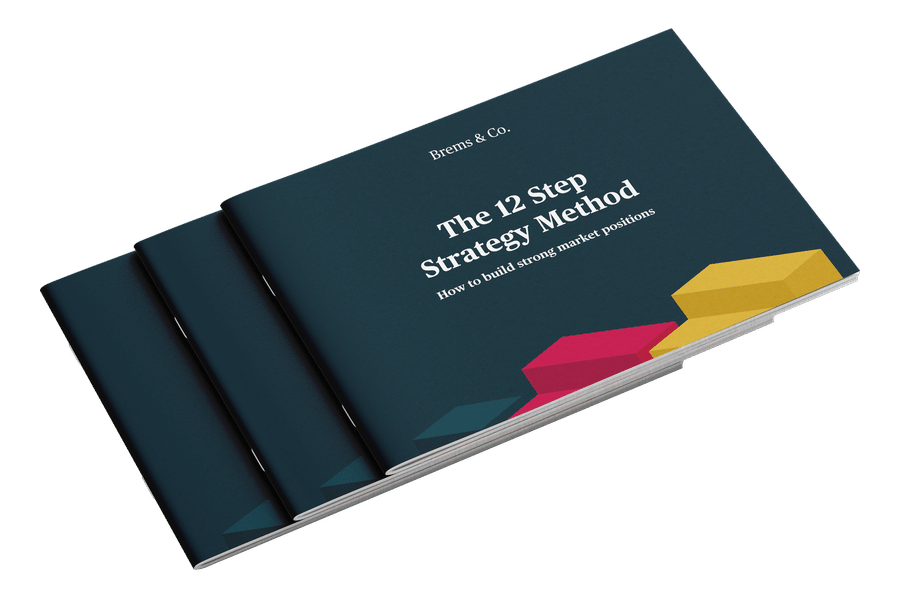6 tips: Rethink your business and succeed!
For the last 3 years, we have worked for a large number of companies, both small start-ups and global companies with three-digit DKK million turnover. Some who had launched their products without really knowing if there was a need in the market, what customers it was for, why they did it, if it fit their overall vision and the company’s DNA, and why the product and company were really unique.
On this basis, we have gathered experience from over 40 customer projects over the last 3 years, which we would like to share with you in the form of 6 good tips.
By Martin Brems, Strategic Advisor and Founder, Brems & Co., September 7, 2016
1. Consumers are the kings
In the previous work with the development of new LEGO concepts, our team was able to present a lot of good ideas and thoughts – but the only thing that really interested the management was: “What do the children say?”.
Therefore: Test your concept continuously and with a minimum of 15-20 people within the target group each time, e.g. 3-4 focus groups or personal interviews. And do it like 3-4 times in a development process.
2. Without passion, your business dies
If you are not passionate about what you do and believe in it yourself, stop immediately and spend your energy on something else. We have advised a large number of companies who wanted too many things at once and had come too far away from their original purpose. In one example, salespeople roamed around to almost everyone in the market to sell their products. In our advice, we always start the first customer meeting by asking what the company’s purpose and vision are. We often get a long, technical and complex description that neither employees nor customers understand.
Therefore: The company’s purpose, mission and vision must be able to stand at max. 2 lines each. Define the mission: Why do you go to work every day? Define the vision: What do you want to change in the world?
3. Think like a start-up
To really succeed with innovative business concepts that lift and secure the future of the company, you must be able to detach yourself from your existing service or product range. You only have to look at what value you can add to consumers, and then develop your products for it. Many ask us how we can advise across so many different industries – everything from schools, lawyers, IT, industry organizations to the textile industry. But it requires people from outside, without history – and with other industry experience – to detach themselves from the company’s focus on existing products to the customers’ real needs.
Therefore: In your process of developing new concepts, ask yourself: If we now imagine that we did not have XX and XX on the shelves, what would we sell?
4. Find your company's 3-4 unique features in the market
Many companies hire expensive value consultants who find out that the company has 6-8 values that they work from. That’s fine enough, but the values of a company make a difference, whether they are in an employee handbook or not. Behavior breeds culture. When we advise companies about their uniqueness and “offer” to consumers – also called Value Proposition, we always start from the outside in. We focus on the commercial and customer-focused value addition, in this lies implicit so also the behavior, an example could be the way to service customers. We recommend a maximum of 3-4 unique areas from which the company must communicate and where they are REALLY unique. Keep it simple.
Therefore: Imagine writing the company obituary. What would it say? Find a maximum of 4 overall areas where you actually make a difference for your customers and competitors. The more concrete the better.
5. Choose the right customers to go after
Many companies do not know their customers well enough. What characterizes them, what challenges do they have (pains), and how can the company best help them (gains), what sales messages are the most important and what marketing and sales tools will work. Through our advice, we help companies to select and not least deselect segments, so that the company can concentrate its efforts on the right customers and hit the spot-on with sales messages.
Therefore: You need to get really close to the customer’s behavior and needs. What frictions can you find. And how can you help the customer with that?
6. Drop conventional ways of thinking in communication
Too many companies think in classic formal communication, which in no way involves and strikes at the heart. Open, authentic and honest dialogue with customers is the way of the future to sell – both within BtC and BtB.
Therefore: Drop the idea of the perfect campaign and the perfect communication text. Consumers and customers demand authenticity and authenticity. The more raw and unfiltered, the better.
Read more...
New business models require a new marketing approach
Even though we are truly tired of talking about the Corona Virus and what it has caused – and causes – for our lives, we must admit that the world has changed almost overnight.…
Welcome to Toyota Material Handling as a new customer at Brems og Co.
Toyota Material Handling is number 1 in the world within forklifts. We have the pleasure of having to help with customer insight and initiatives for increased conversion and sales…
The 5-year plan is dead – what now?
You can’t develop your strategy as you usually do in 2021 - and Covid-19 is (unfortunately) a good example of why. Here are 5 suggestions of what you can do instead.
Brems & Co. gets full marks in customer survey
We have a Net Promoter Score of 100. Our customers gave us 4.9 out of 5 in output and project management and Martin Brems received personal and professional praise.
Sustainability has to be the core of COVID-19 recovery
Temperature swings, irresponsible production and economic downturn. Sustainability has been on the agenda for years, but things have changed during the pandemic. Even though novel…
Sustainable marketing strategy for world-famous fitness brand
Most people who have seen the American Netflix series House Of Cards are also familiar with the beautiful handmade wooden rowing machine WaterRower from the company of the same…
Welcome to Megatrade as a new customer at Brems & Co.
For more than 40 years, Megatrade has offered individual customer-specific solutions and services to e.g. hinges and fittings, based on their customers' business. Brems & Co.…
Sports stars and directors throw themselves in the sand at beach volley
Olympic gold winner, bank director, and business owner. These are some of the titles of the members of a networking group that meets early in the morning to play beach volley.…
Brands need to be more human
If one good thing has come from the COVID-19 crisis, it would be that it has given us time and peace to reflect on what it means to be human and part of a family.










